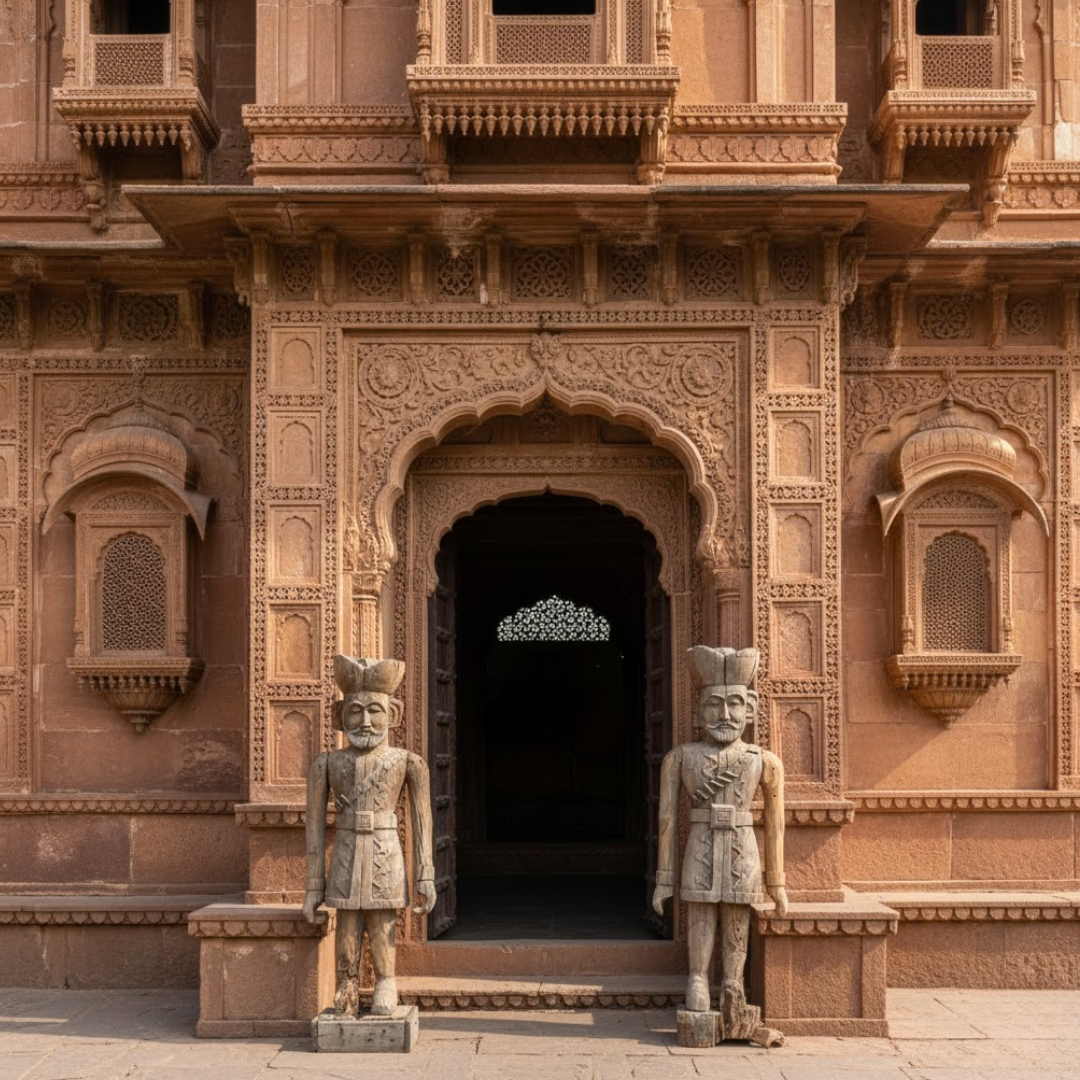
Price
Materials
Period
Place of origin
SKU
Dimensions
Available Stock: 1
About the product
Antique 1910 Rajasthani Wooden Soldier Statues
Guardian Figures in Solid Teak | Folk-Art Protectors from Rajasthan, India
Step into the Noble Grandeur of Rajasthan’s Past
This commanding pair of antique wooden soldier statues, hand-carved from solid teakwood circa 1910, once guarded the entrances of stately Rajput havelis in Rajasthan. Far more than decorative objects, these figures embodied the martial pride and protective spirit of the Rajput warrior class, representing honour, vigilance, and noble strength.
Each figure is depicted in traditional attire, featuring the signature turban, crossed sash, and upturned moustache that symbolise Rajput valor. Though over a century old, both statues remain remarkably intact, with one featuring a carefully restored arm in matching aged teak. The warm patina, softened carvings, and worn surfaces reveal a century of exposure, while preserving the bold sculptural energy of the originals.
Architectural Presence and Rajput Symbolism
Early 20th-century origin (circa 1910), Rajasthan, India
Hand-carved from solid teakwood, renowned for strength and longevity
Depicts Rajput soldiers in traditional military attire
Originally placed at haveli entrances as protective guardians
One arm replaced using reclaimed teak, blending seamlessly
Distinctive folk-art detailing with deep cultural resonance
Exceptional as a paired architectural or sculptural display
Cultural and Historical Context
In the Rajput tradition, guardian statues were symbols of loyalty, protection, and divine order. Commissioned by noble families, these carved sentinels flanked haveli entrances to safeguard against misfortune and to project the family’s lineage and prestige. The soldier figures reflect the honour-bound ethos of the Rajputs, whose martial identity shaped much of Rajasthan’s cultural and architectural heritage.
Styling Inspiration
Display these figures symmetrically at an entryway, gallery or landing to create a sense of grandeur and history. Pair them with antique brass, carved jharokha mirrors, or patterned Indian textiles for a layered aesthetic. Their commanding form also suits boutique hotels, heritage properties, or curated interior spaces that celebrate cultural storytelling.
Specifications (per figure)
Height: 154 cm
Width: 50 cm
Depth: 28 cm
Material: Solid aged teakwood
Era: Circa 1910
Origin: Rajasthan, India
Condition: Excellent for age, with one restored arm and natural patina
Function: Decorative pair, symbolic guardians, or architectural statement pieces
Delivery and Collection
This pair is available via white-glove delivery across the UK or by appointment for local collection. For international logistics and placement support, please contact Regen Bespoke.
Exclusively available at Regen Bespoke
Majestic examples of Rajasthani folk craftsmanship where protection meets artistry, and history finds its place in contemporary interiors.







